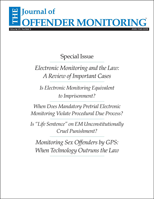Electronic Monitoring in Canada: Federal and Provincial/Territorial Law and Practice
Author: Deirdre McDonald.
Source: Volume 27, Number 01, Spring/Summer 2014 , pp.13-27(15)

< previous article |next article > |return to table of contents
Abstract:
The first Electronic Monitoring (EM) program in Canada was introduced nearly thirty years ago, then as now typically a feature of a probation, parole, or bail order. While three decades of experience might seem to place it in the class of “early adopter,” EM’s reach and impact on the Canadian criminal justice system has been surprisingly limited. For many years, Canada had a well-earned reputation for thoughtful and humane correctional practices, for eschewing imprisonment where alternatives might work just as well, and for making policy based on research long before “evidence-based” became the fashion—all the more reason why Canada’s slow adoption of EM as an alternative to incarceration is worth examining. This article is intended to provide a broad assessment of when and how EM is applied in Canada, the types of offenders for which it is used, what research studies have concluded about its efficacy, and some thoughts on the future role of EM in the Canadian justice system. It offers guidance for court administrators and officers, corrections practitioners, and providers of EM services and technology who want to understand where electronic monitoring fits in the Canadian criminal justice system, and where opportunities for its enhancement, improvement, and expansion are ripe.Keywords: Correctional Service Canada; Corrections and Conditional Release Act (CCRA); Safe Streets and Communities Act (SSCA); monitoring cost; EM program effectiveness studies
Affiliations:
1: Carleton University.